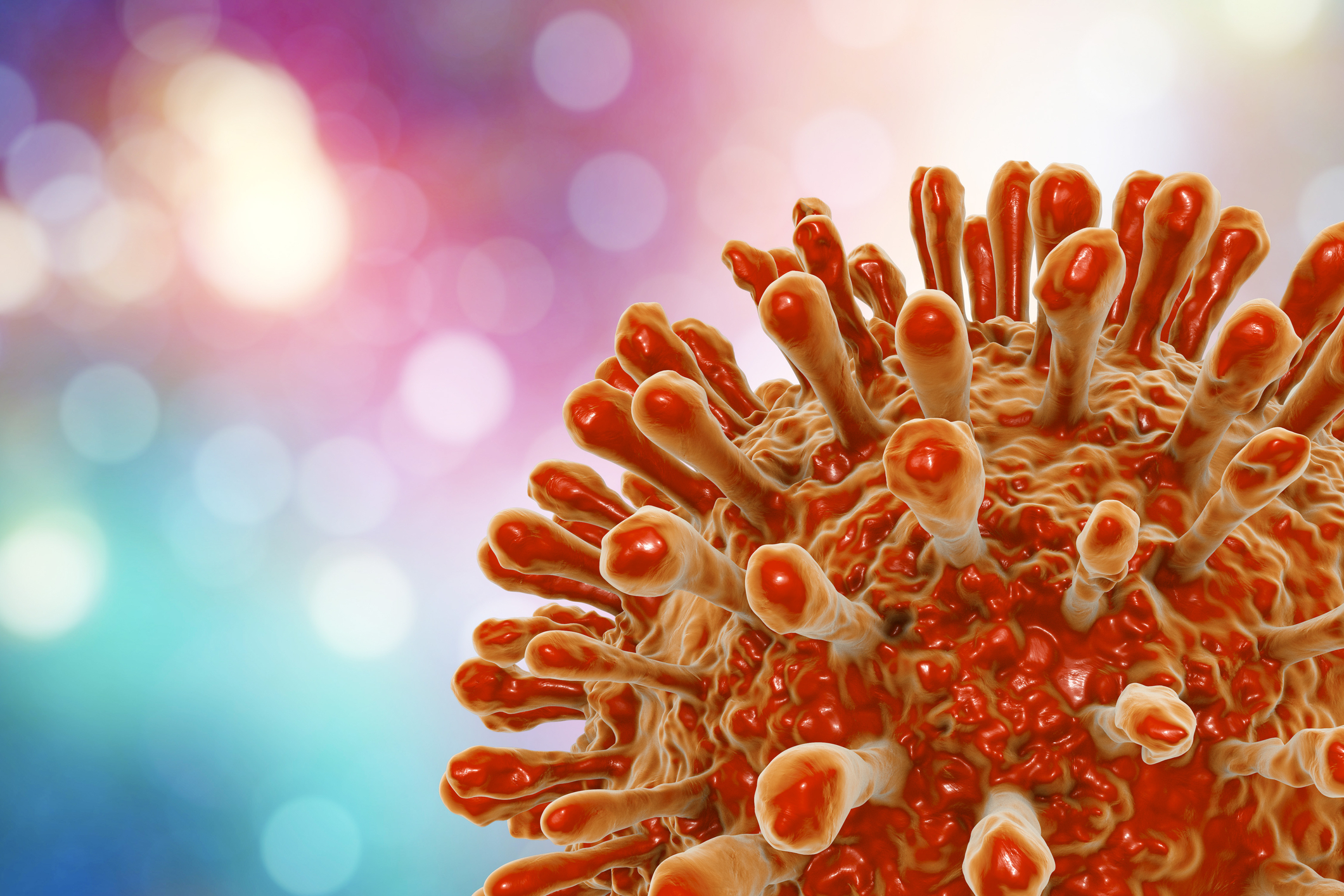
(Medical Illustration of an AIDS Virus)
Viruses, as a group, are 1.5 billion years old, predating humans (200,000 years old) by approximately 1,499,800,000 years. Humans live intertwined with viruses in a complex web of life. As one looks at tinier and tinier pieces, the building blocks that make up unbelievably small viruses (RNA, DNA, proteins) are the same building blocks that make up humans.
This relationship, historically, has not always been bad for humans. James Shapiro, a University of Chicago microbiologist notes that “we wouldn’t be here without them.”[i] Researchers speculate that as a part of the evolution of mammals more than 100 million years ago, a viral infection in a primitive mammal uploaded a gene for the protein syncytin that helped the mammalian placenta to evolve.[ii]
Viruses use the protein syncytin to fuse cells together, so that viruses may move from one host cell to the next. In mammals, that very same protein is the actual substance that fuses the placental cells (connected to the fetus through the umbilical cord) with the mother’s uterine cells, allowing vital nutrients to be transmitted through those tissues, and the human fetus to develop and grow.[iii] Without that long ago viral infection in a mammalian ancestor, no human child may have ever blinked their eyes open on a warm summer morning, to greet a bright new day.
Modern humans like to believe that we are in control of most things, but the COVID-19 pandemic has abruptly reminded us that we are still subject to the laws of nature. Although the illness, deaths, and disruption created by COVID-19 may seem unprecedented to modern humans right now, in biological time, periodic waves of both viral and bacterial infections have ebbed and flowed, much like the tides, for as long as humans have existed here on this earth.
But humans have made great progress in preventing, treating, or curing disease, and should continue to do so. When my grandmother Marie Oliver Vance Zipp was born in Texas in 1911, her life expectancy was then 53 years. Her later husband, my grandfather Dr. Raymond Zipp, treated childhood and adult diseases like polio, pertussis (whooping cough), and tuberculosis in the small South Texas town of Edna, Texas, where my mother Valerie grew up, and where I later graduated from high school. These diseases had no effective preventative vaccine, or treatment back then.
A female child now born in 2017 (latest figures available) expects to live for 81 years, 28 years longer than in my grandmother’s time. And the diseases above that my grandfather battled at close range, are now under control in this country. Scientific research has brought us so many more years of life in a relatively short time.
In the early 1980s, my first biology professor at the University of Texas at Austin died of the human retrovirus AIDS while in his 40s, when I was still an undergraduate biology student. Not unlike our 1960s space program that eventually brought us to the moon, the focused time, attention, and money brought to bear against that AIDS crisis eventually yielded great benefits. If my first biology professor had contracted AIDS now, the antiretroviral therapies gleaned from that global research response could have allowed him to live a significantly longer productive life.
With the focused financial and scientific attention now being directed towards COVID-19, we can better respond to this new crisis also, hopefully reducing transmission rates while COVID-19 eventually runs its course. Research advances are already coming. Just this week, my old molecular biology professor at the University of Texas, Dr. Matthew Winkler, announced that one of the biotech companies he founded, Asuragen, has developed molecular diagnostics technology which can now be used to develop more sensitive and accurate COVID-19 molecular diagnostic tests.[iv]
Humans have big brains, with much more capacity than we need for just survival. We have plenty of room to hold worry, and stress, within our extra cognitive spaces, but that can be counterproductive to our health — worry and stress actually depress our immune systems,[v] making us more vulnerable to infections like COVID-19.
The more normal we can make life while it is not normal, the more we can remember things that make us laugh, and the more we can go back to our own personal ways to exercise and reduce stress, the healthier we will be. And when we can feel a little better, the more we will realize that this too shall pass.
REFERENCES
[i] Viviane Richter, What Came First, Cells or Viruses, Cosmos (October 19, 2015), https://cosmosmagazine.com/biology/what-came-first-cells-or-viruses
[ii] Id.
[iii] Id.
[iv] News Release, Asuragen Develops Armored RNA Quant® SARS-CoV-2 Control (March 16, 2020), https://asuragen.com/news-list/asuragen-develops-armored-rna-quant-sars-cov-2-control/
[v] Stress Weakens the Immune System, American Psychological Association (February 23, 2006), https://www.apa.org/research/action/immune
